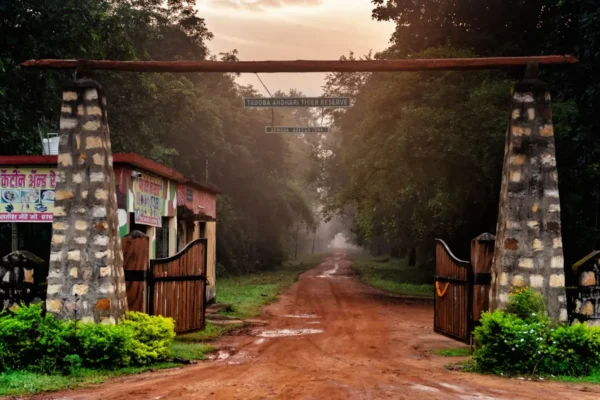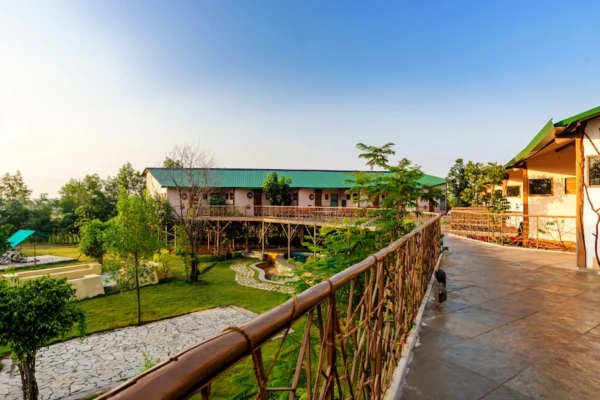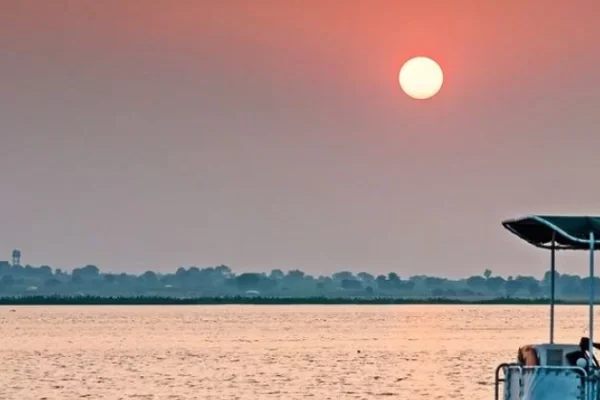When most people think of a wildlife safari in India, they usually focus on the core zones of famous reserves like Kanha, Pench, or Bandhavgarh. However, a subtle shift is happening at the edges of the wild; buffer zones are gaining attention, and Tadoba National Park’s buffer zones are at the forefront.
Located in the Chandrapur district of Maharashtra, Tadoba Andhari Tiger Reserve (TATR) is well-known for its high tiger population and the excellent wildlife experiences it provides in its buffer zones. In fact, many experienced wildlife enthusiasts now prefer Tadoba buffer zones to the core zones of other parks.
What Are Buffer Zones?
In any tiger reserve, the core zone is the most protected area dedicated solely to wildlife conservation with minimal human presence. Buffer zones are the surrounding areas where controlled human activity and tourism are allowed. Traditionally viewed as lesser than core zones, the buffer zones in places like Tadoba are changing that viewpoint.
- Sightings in Buffers

In many parks, tigers stay deep within the core zone, but at Tadoba, tigers are often spotted in the buffer zones. This is partly because the buffer zones provide plenty of prey, water sources, and undisturbed forest thickets that tigers prefer for moving around and raising cubs.
Some of the top buffer zones include:
– Agarzari
– Devada /Adegaon
– Junona
– Ramdegi / Nimdela
– Madnapur / Kolara
– Alizanza
In TATR, there are 16 buffer gates to explore, which gives you different experience and forest feel in each zone.
- Safari Availability

One big benefit of Tadoba’s buffer zones is availability:
– More buffer gates increase the odds of booking safaris, especially during peak season.
– Many zones now offer fullday or halfday safari choices for those wanting a more indepth experience.
- Habitats and Landscapes

Every buffer zone in Tadoba has its unique appeal:
– Agarzari features rocky terrain and thick bamboo.
– Junona is rich in birdlife and has several waterholes.
– Ramdegi showcases beautiful hilly landscapes and tribal cultural sites.
– Mamla has more teak canopies and less bamboo with mix vegetation.
This diversity ensures each buffer safari feels fresh and thrilling.
- Community Based Tourism and Eco Development
Tadoba has set an example by involving local communities in conservation efforts. All safaris are community-run, which:
– Creates jobs for local guides, drivers.
– Motivates villagers to protect rather than exploit the forest
– Promotes sustainable ecotourism (Minimum use of plastic & inducing EV vehicles)
This community involvement has resulted in low conflict levels and greater acceptance of wildlife near human settlements.
- Cost Effective and Accessible
Safaris in buffer zones are often:
– More affordable than those in core zones
– More options to choose.
This makes them an excellent option for budget travelers or those wanting to take multiple safaris during one trip.
Final Thoughts

Tadoba buffer zones are no longer just a second choice; they are prime wildlife destinations in their own right. With amazing tiger sightings, rich biodiversity, and strong community involvement, these zones provide a deeper and more authentic experience of the Central Indian wilderness. So, when planning your next jungle getaway, think about exploring Tadoba buffer zones.



